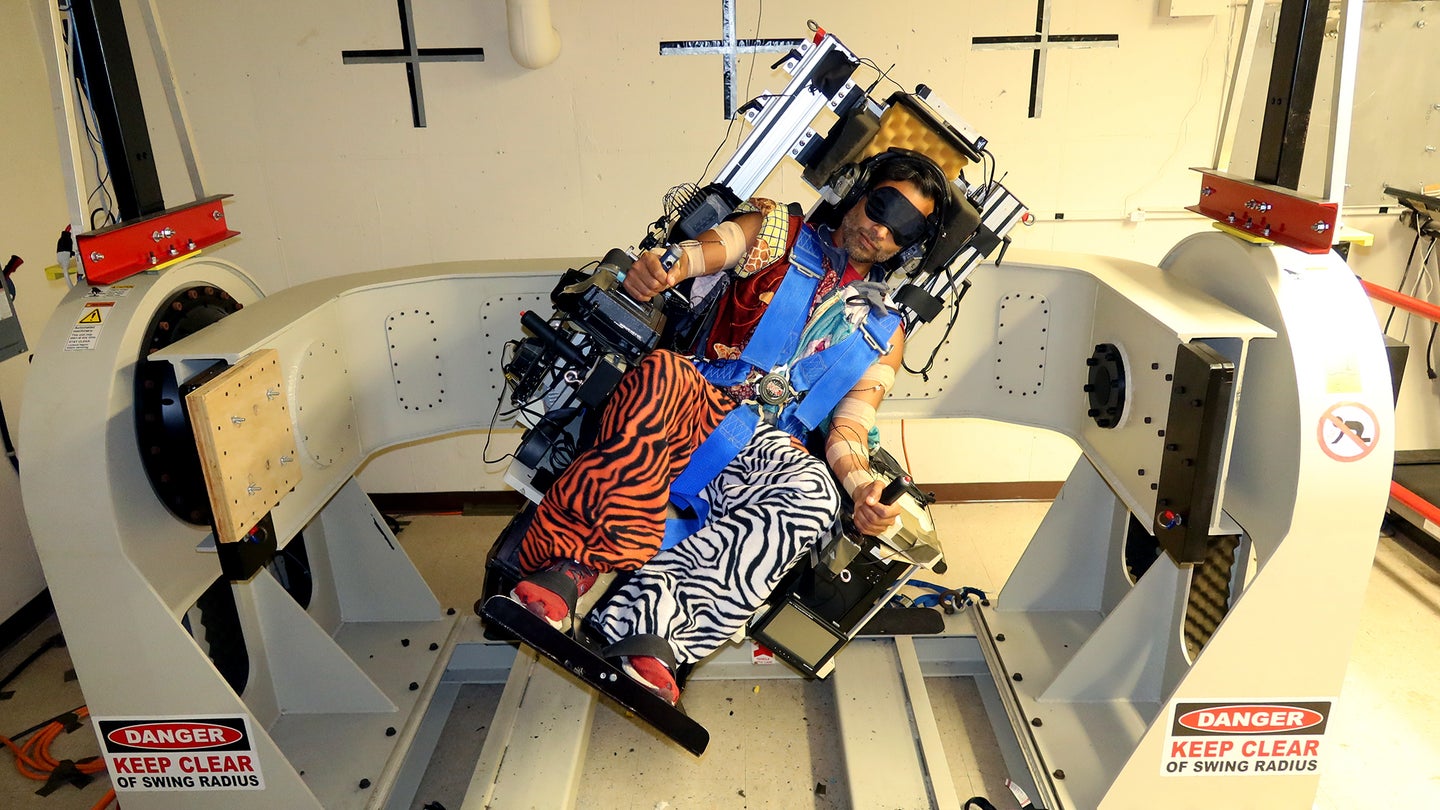
There’s an aviation term called the “death spiral”—when pilots’ skewed sensory perceptions contradict the accurate readings on their instruments, causing confusion and leading to bad course corrections. As the name implies, this often leads to tragic consequences—many experts believe such an issue contributed to John F. Kennedy, Jr.’s fatal crash in 1999, as well as the 1959 tragedy that killed Buddy Holly, Ritchie Valens, and The Big Bopper. Disorientation was also one of the causes in the 2021 helicopter crash that claimed Kobe Bryant’s life.
[Related: How pilots end up in a ‘death spiral’ ]
Such a scenario is terrifying enough on its own—but imagine a similar situation while floating in the vacuum of space. With no gravitational pull and few, if any, points of reference, working in such an environment could quickly become disorienting and potentially dangerous as astronauts lose their sense of direction.
Although NASA astronauts receive copious training to guard against spatial disorientation, the issue is still a huge concern, especially as private companies increasingly expand their own projects with both space tourism and governmental contracts. Thanks to a team of researchers, however, wearable sensors enhanced by vibrotactile feedback might one day help keep astronauts feeling grounded.
[Related: This US astronaut will have spent an entire year in orbit.]
“Long duration spaceflight will cause many physiological and psychological stressors which will make astronauts very susceptible to spatial disorientation,” Vivekanand P. Vimal, a research scientist at Brandeis University’s Ashton Graybiel Spatial Orientation Lab, explained in a recent profile. “When disoriented, an astronaut will no longer be able to rely on their own internal sensors which they have depended on for their whole lives.”
To explore these issues, Vimal and their colleagues conducted a series of trials involving 30 participants. The team taught 10 of them to treat their vestibular senses (which pick up onwhere they are in space and where they are going) with skepticism. Another 10 volunteers received the same training alongside the addition of vibrotactors—devices attached to their skin that buzz depending on their geospatial positioning. The final 10 participants only received the vibrotactors with no training whatsoever. Subjects then wore blindfolds and earplugs while white noise played in the background, and took their place inside an intentionally disorienting “multi-axis rotation device” (dubbed MARS).
Similar to an inverted pendulum, MARS first rotated upright subjects from side-to-side around a central axis to act as an analog to everyday gravitational cues on Earth. Subjects then used two joysticks to attempt to remain stabilized without swinging into either side’s crash boundary. A second phase involved the same parameters, but with the cockpit shifted on a horizontal angle (with the participants facing the ceiling) to better approximate a space environment without Earth’s gravitational reference points. Throughout each subject’s 40 trials, vibrotactors on 20 of the 30 participants buzzed if they shifted too far from a central balancing point, thus potentially queuing them to correct their position with their joysticks.
Vimal, alongside co-authors Alexander Sacha Panic, James R. Lackner, and Paul DiZio, published the results in a new study published on November 3 with Frontiers in Physiology. According to the team’s findings, all participants first felt disoriented during the analog tests due to conflicting input from their vestibular systems and vibrotactors. Those with prior training with their sensors performed best during the space phase, while training-only participants without the wearables “crashed” more often. This third group also accidentally destabilized themselves more frequently than the other two. However, the subjects performed far better while situated in the Earth analog position, with or without the vibrotactors’ aid—Vimal’s team suspects the devices may have been too weak, or participants needed more time to adjust to the devices.
[Related: ISS astronauts are building objects not possible on Earth.]
With further testing and refinement, Vimal’s team believes engineers could integrate similar wearables into astronauts’ suits to provide orientation aid, both inside spacecraft and outside space stations. They may be small additions, but they are some that could save explorers from some very serious, scary, and possibly even fatal circumstances.
The post These wearables might protect astronauts from space ‘death spirals’ appeared first on Popular Science.
Articles may contain affiliate links which enable us to share in the revenue of any purchases made.



